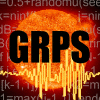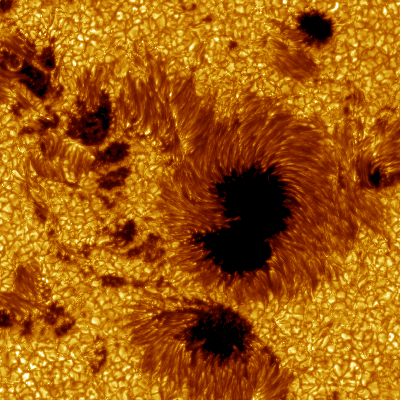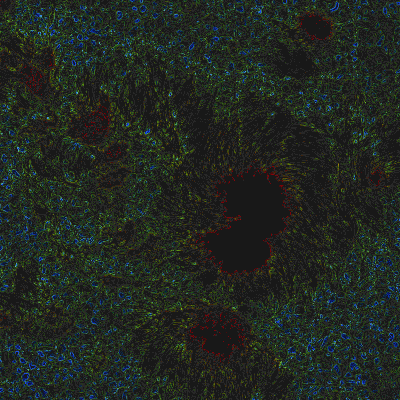 |
Groupe de Recherche en Physique SolaireImage d'arrière plan / Background image
|
 |
 |
Groupe de Recherche en Physique SolaireImage d'arrière plan / Background image
|
 |
|
L'image utilisée en arrière-plan aux pages Web du groupe
de Recherche en Physique Solaire a été produite en appliquant
l'algorithme de détection de bords du logiciel de traitement
d'image "xv" à une version haute résolution de l'image
de la photosphère solaire reproduite en bas à gauche,
produisant ainsi l'image synthétique en bas à droite.
L'image originale a été saisie par le Prof. Goran Scharmer et ses collaborateurs, le 15 juillet 2002 au Swedish Solar Telescope à La Palma (Iles Canaries, Espagne), opéré par l'Académie Royale des Sciences de Suède. Elle couvre une surface de 57000 par 58000 kilomètres, et demeure à ce jour l'une des images à la plus haute résolution jamais obtenue de la photosphère solaire. Cliquer ici pour plus de details. L'algorithme de détection de bord revient essentiellement
à calculer la grandeur du gradient spatial de l'intensité
de l'image originelle, et représenter ce gradient à chaque
pixel à l'aide d'une échelle de couleur. On remarque la
très abrupte transition entre l'ombre et la pénombre
de la grande tache solaire (en rouge sur l'image de droite),
phénomène demeurant quantitativement incompris à ce jour.
Les structures bleutées correspondent aux granules,
ayant un diamètre d'environ 1000 kilomètres.  |
The image used as background for the Web pages of the Solar Physics
Research Group was generated by running the edge detection
algorithm of the image processing software "xv" on a high
resolution version of the solar photospheric image
shown below (left), thus producing the synthetic
image on its right.
The original image was captured on 15 July 2002 by Prof. Goran Scharmer and collaborators at the Swedish Solar Telescope on La Palma (Canary Island, Spain), operated by the Royal Swedish Academy of Sciences. It covers an area of 57 x 58 thousand kilometers near disk center, and remains to this day one of the highest resolution image ever made of the solar photosphere. Click here for more details. The edge detection algorithm amounts
to computing the spatial gradient of the original image,
and displaying its magnitude as a pixel image using an
arbitrary color scale. Note here the abrupt transition
between the umbra and penumbra of the large sunspot,
(red line on the left image), a feature that to this day
remains ill-understood quantitatively. The blueish structures
are granules, each of a diameter of about 1000 kilometers.  |
 GRPS Home |
Dernières modifications le 10 juillet 2006 par
paulchar@astro.umontreal.ca.
|